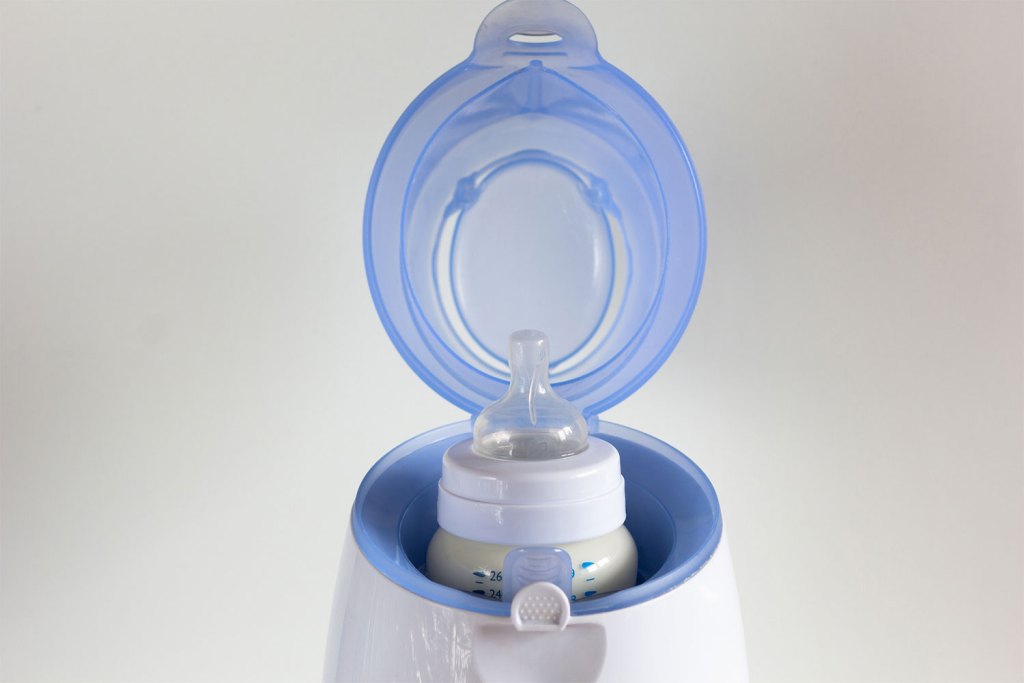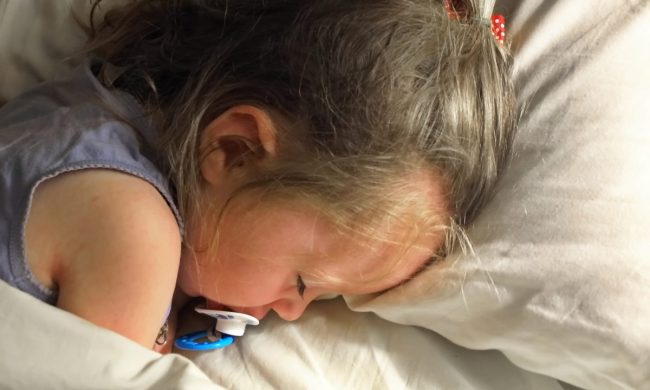There are several safety considerations to take into account when warming up a bottle for a baby, from protecting the integrity of the breast milk to making sure it isn’t overheated to a point it could burn the baby. The CDC and other respected organizations have guidelines on properly freezing and storing breast milk that you should consider before the reheating step.
Whether you’re warming cold or frozen breast milk or making a new formula bottle from powder, or whether you’re considering a bottle warmer and wondering if a microwave is safe, read on for the answers.

How to warm up breast milk that’s been frozen
There are three ways to thaw frozen breast milk safely:
- Leave the container in the refrigerator until thawed
- Hold the container under warm (not hot) running water until thawed or warmed
- Leave the container in a bowl or pot of warm (not hot) water until thawed or warmed
The first method takes several hours, while the second two take about two minutes, but it can be convenient to set out the next day’s milk in the fridge overnight.
Regardless of which way the milk is thawed, it must be used within 24 hours of when it thawed. Once it has been warmed after being frozen, it should be used within two hours.
Once the milk is no longer frozen, you can warm it using one of the two warm-water methods above. Be sure to keep the container sealed while warming since you don’t want to mix it with any water. Once it’s warm, you may see inside the container that the fat has separated (thicker and more yellow than the thinner, whiter liquid). You can swirl (not shake) the container to mix the fat back in.
Do not heat breast milk using a microwave or stovetop. This will overheat it, warm it unevenly, and degrade the quality of the breast milk.
Once the milk is warmed, test a drop on the inside of your wrist to make sure it is not too hot. Don’t stick your finger into the milk, but try to just tap the nipple of the bottle to your skin.
How to warm up breast milk from the refrigerator
All of the same rules and methods about frozen milk above apply here; you can use warm (not hot) water to warm the container of breast milk, then use it within two hours after testing the temperature on your skin.
Also, keep in mind that it is fine to give a baby cold or room-temperature breast milk as long as they are willing to drink it. Warming is optional, and if you don’t warm freshly expressed milk that you put in the refrigerator (not the freezer), it will still be good for four days.
A bottle warmer is another option for warming cold milk, but there are concerns that a bottle warmer may overheat or unevenly reheat the milk and kill off beneficial breast milk elements. The warm-water methods are the ones recommended by the CDC. If you do shop for a bottle warmer, look for one that will not heat the breast milk above 80 F and that warms slowly.

How to warm up a baby bottle of formula
If the formula has already been made and you want to warm it, use one of the same two methods you would for cold breast milk described above. Do not use a microwave or stovetop for the same reasons of uneven heating that can create pockets that could burn your baby’s mouth and throat. You can use a bottle warmer as well (see above).
If your powdered-formula instructions allow it and you have safe tap water in your area, you can also use warm water right from the tap to make the bottle.
Formula can be shaken to ensure the temperature is even throughout, but don’t do it much because it can create air bubbles. You can swirl it like you would breast milk to avoid this.
Test a drop on your wrist like you would for breast milk, as well, making sure it is warm but not hot. Also, just like breast milk, warming is optional, and you can feed your baby cold or room-temperature formula if they will accept it.
Overall, the most important thing is to follow safe breast milk guidelines or the formula maker’s instructions and to check that the bottle’s contents are only warm, not hot.
Whether you give your baby formula or breast milk — or some combination of both — it’s important to warm their bottles safely. Warm milk isn’t necessary if your baby likes room-temperature or cold meals, but if you follow these guidelines, your child can have a warm bottle in no time.



